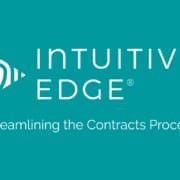 The landscape of antitrust interventions in the United States has been dramatically shaped by major corporate breakups, particularly the historic dismantling of the Bell System in the 1980s and the hypothetical scenario of a Google split today. Both cases, though decades apart, highlight the government’s role in curbing the dominance of single entities to foster competition, innovation, and consumer benefits. This article explores the parallels and differences between these two landmark cases and their implications for the tech industry today.
The landscape of antitrust interventions in the United States has been dramatically shaped by major corporate breakups, particularly the historic dismantling of the Bell System in the 1980s and the hypothetical scenario of a Google split today. Both cases, though decades apart, highlight the government’s role in curbing the dominance of single entities to foster competition, innovation, and consumer benefits. This article explores the parallels and differences between these two landmark cases and their implications for the tech industry today.
The Breakup of Bell System
In 1982, AT&T agreed to divest its local Bell operating companies following a Department of Justice lawsuit that charged it with anti-competitive practices. The divestiture, completed in 1984, ended a monopoly that had controlled the vast majority of U.S. telephone service and much of the telecommunications equipment manufacturing through its subsidiary, Western Electric. This breakup led to the creation of seven regional telephone companies, known as the “Baby Bells,” significantly altering the telecommunications landscape by injecting competition and leading to lower prices and innovation in telecom services.
Enhanced Competition: The emergence of competitors in the long-distance and local telephone service markets.
Spurring Innovation: Increased investment in telecommunications research and development, leading to rapid technological advancements, including the proliferation of mobile phones and high-speed internet access.
Regulatory Changes: The Telecommunications Act of 1996, which further deregulated the market, was influenced by the dynamics set in motion by the breakup.
Hypothetical Google Split
Fast forward to today, and similar antitrust scrutiny is being directed at tech giants, notably Google. Critics argue that Google’s dominance in search, advertising, mobile operating systems, and several other areas stifles competition and innovation. A hypothetical mandated split of Google, much like the Bell System’s breakup, could involve divesting some of its business units to diminish its market control and increase competition in digital markets.
Potential impacts of a Google breakup might include:
- Fostering Digital Market Competition: New, independent companies born from Google’s business units could lead to a more competitive landscape in online advertising, search, and mobile services.
- Innovation and Consumer Choice: Reduced barriers for emerging tech companies could lead to more innovation and greater consumer choice, especially in markets currently dominated by Google, such as online advertising and mobile operating systems.
- Privacy and Data Security Enhancements: With multiple entities handling what was once centralized under Google, there might be stronger incentives to enhance privacy measures and secure user data to gain competitive advantages.
Comparison and Contrast
Similarities:
- Both AT&T and Google held/hypothetically hold significant control over their respective markets, influencing entire sectors of the economy.
- The government’s motive for intervening is rooted in restoring competition and correcting market imbalances.
- The aftermath of such a breakup is expected to foster innovation and consumer benefits through increased competition.
Differences:
- The nature of the industries and the type of monopoly: AT&T’s monopoly was clear in a tangible service market, whereas Google’s dominance spans multiple, interlinked digital platforms.
- The speed of technological change is much faster today than it was in the 1980s, meaning that the effects of any tech giant’s breakup would likely manifest more rapidly and unpredictably.
- Regulatory frameworks have also evolved, with modern digital markets presenting new challenges for antitrust enforcement that were not present during the Bell breakup.
Realities of a Hypothetical Breakup of Google: Navigating Corporate Division
In a landmark hypothetical scenario, imagine a world where Google, one of the most influential tech giants globally, has been ordered by regulatory authorities to split its operations. This decision could stem from antitrust concerns, with regulators aiming to curb its dominance in various sectors and promote competition. Such a split would have profound implications not just for Google but for the entire tech industry, impacting stakeholders from global advertisers to the smallest app developers. This article explores the potential challenges and strategic considerations of navigating such a monumental corporate breakup.
Legal and Regulatory Challenges
The initial challenge in a hypothetical split of Google would involve addressing the specific requirements set forth by the regulatory body. This might include defining clear boundaries for the division of its services such as search engines, advertising services, mobile technology, and potentially other ventures like cloud computing and hardware.
Compliance Strategies
- Legal Review and Restructuring: Google would need to conduct a comprehensive review of all its legal and operational structures to align with antitrust directives, ensuring each newly formed entity operates independently and without unfair competitive advantages.
- Stakeholder Negotiations: Engaging in dialogue with stakeholders, including shareholders, business partners, and government entities, to address concerns and outline the future operational landscape.
Operational Decoupling
Decoupling Google’s integrated services would be a Herculean task, given their deeply intertwined nature across various platforms and markets. Each division, from Android and Google Search to Google Ads and Google Cloud, would require careful separation of data, infrastructure, and services.
Operational Separation Approaches
- Infrastructure Division: Splitting the physical and digital infrastructure, ensuring that data centers, servers, and network resources are appropriately allocated without compromising service integrity.
- Data Governance: Establishing robust data governance frameworks to handle the immense data repositories independently managed by the split entities, ensuring compliance with global data protection regulations.
Financial Implications
The financial implications of a split would be significant. The valuation of the newly independent companies, their performance on stock markets, and their ability to attract investment would be under intense scrutiny.
Financial Management Strategies
- Transparent Reporting: Maintaining transparent financial disclosures to reassure investors and regulators of the financial health and viability of the newly independent entities.
- Reassessing Financial Relationships: Redefining financial relationships and obligations with creditors, suppliers, and service providers to ensure financial stability post-split.
Impact on Innovation and Market Competition
A split could potentially reshape the competitive landscape of the tech industry. On one hand, it might spur innovation and competition; on the other, it might dilute Google’s ability to invest in new technologies and solutions at a previous scale.
Innovation Management
- Fostering R&D: Each entity would need to maintain robust research and development initiatives to continue innovating within their respective markets.
- Strategic Partnerships: Forming new strategic partnerships to leverage external expertise and technologies that complement their reduced in-house capabilities.
Maintaining Brand Identity and Customer Trust
- Preserving brand identity and customer trust through a split is crucial. Customers, advertisers, developers, and partners will need assurances that the services they depend on will not be disrupted.
Brand Management Strategies
- Clear Communication: Deploying clear, consistent communication strategies to inform all users and stakeholders about how the changes will affect them.
- Service Continuity: Ensuring service continuity during the transition, with a focus on maintaining the quality and reliability that users expect.
Conclusion
While the breakup of the Bell System and the hypothetical split of Google are separated by technology generations and regulatory eras, both scenarios underscore the ongoing relevance of antitrust interventions in maintaining market health. As digital platforms continue to dominate global commerce and communication, the lessons learned from past antitrust actions remain a crucial guide for navigating present and future challenges.
The hypothetical scenario of a Google split poses numerous challenges and opportunities. Successfully navigating this complex process would require meticulous planning, strategic foresight, and proactive stakeholder engagement. Such a profound transformation could set a precedent in the tech industry, potentially leading to a more diversified market and fostering an environment where innovation and competition can thrive under new norms.
 Setting: Two separate conference rooms, one buzzing with chaos and the other humming with efficient processes during a high-volume procurement contract transition post-acquisition.
Setting: Two separate conference rooms, one buzzing with chaos and the other humming with efficient processes during a high-volume procurement contract transition post-acquisition.

 I recently interviewed Peter Connor, the author of “The T Shaped Lawyer”. The concept of the T-shaped lawyer is revolutionizing the way the legal industry approaches and serves its business clients, whether it be in-house counsel or law firm lawyers. This model of professional development emphasizes not only deep legal expertise (the vertical bar of the ‘T’) but also a broad set of skills across various disciplines (the horizontal bar of the ‘T’). In my world, such lawyers are vital in the M&A process, specifically during transitions and integrations, where understanding a wide array of business, strategic, and interpersonal dynamics can significantly influence the outcome of a deal.
I recently interviewed Peter Connor, the author of “The T Shaped Lawyer”. The concept of the T-shaped lawyer is revolutionizing the way the legal industry approaches and serves its business clients, whether it be in-house counsel or law firm lawyers. This model of professional development emphasizes not only deep legal expertise (the vertical bar of the ‘T’) but also a broad set of skills across various disciplines (the horizontal bar of the ‘T’). In my world, such lawyers are vital in the M&A process, specifically during transitions and integrations, where understanding a wide array of business, strategic, and interpersonal dynamics can significantly influence the outcome of a deal. The landscape of antitrust interventions in the United States has been dramatically shaped by major corporate breakups, particularly the historic dismantling of the Bell System in the 1980s and the hypothetical scenario of a Google split today. Both cases, though decades apart, highlight the government’s role in curbing the dominance of single entities to foster competition, innovation, and consumer benefits. This article explores the parallels and differences between these two landmark cases and their implications for the tech industry today.
The landscape of antitrust interventions in the United States has been dramatically shaped by major corporate breakups, particularly the historic dismantling of the Bell System in the 1980s and the hypothetical scenario of a Google split today. Both cases, though decades apart, highlight the government’s role in curbing the dominance of single entities to foster competition, innovation, and consumer benefits. This article explores the parallels and differences between these two landmark cases and their implications for the tech industry today. Navigating Gun-Jumping in Mergers and Acquisitions: A Guide for Due Diligence and Contract Transition
Navigating Gun-Jumping in Mergers and Acquisitions: A Guide for Due Diligence and Contract Transition Choosing the Right AI and Data Analytics Tools for Contract Review: A Guide to Efficiency and Reliability
Choosing the Right AI and Data Analytics Tools for Contract Review: A Guide to Efficiency and Reliability The Spectrum of Chaos in M&A Transitions: The Critical Role of Third-Party Expertise
The Spectrum of Chaos in M&A Transitions: The Critical Role of Third-Party Expertise The Three Pillars of Successful M&A Integration: Insights from Vidur Bhandari
The Three Pillars of Successful M&A Integration: Insights from Vidur Bhandari In the complex world of mergers and acquisitions (M&A), the integration process is as critical as the deal itself. However, all too often, integrators are siloed from the deal-making team, leading to missed opportunities and challenges during the integration phase. Integrating these roles more closely can significantly enhance the success of M&A transactions by ensuring that value synergies are identified early and relationships are forged that will facilitate smoother integration activities later on.
In the complex world of mergers and acquisitions (M&A), the integration process is as critical as the deal itself. However, all too often, integrators are siloed from the deal-making team, leading to missed opportunities and challenges during the integration phase. Integrating these roles more closely can significantly enhance the success of M&A transactions by ensuring that value synergies are identified early and relationships are forged that will facilitate smoother integration activities later on. In the intricate world of corporate acquisitions and divestitures, managing contract transitions efficiently is essential. This process involves navigating through numerous contracts, adjusting them to new business realities, and ensuring they align with strategic objectives. To streamline this complexity, adopting a structured approach like the OASIS Cycle® (Organize, Analyze, Standardize, Institutionalize, Synergize) can be incredibly beneficial. Moreover, integrating the principles of the “flow state,” as described by Mihaly Csikszentmihalyi in his books including “Finding Flow”, can enhance the effectiveness and efficiency of this process, leading to superior outcomes.
In the intricate world of corporate acquisitions and divestitures, managing contract transitions efficiently is essential. This process involves navigating through numerous contracts, adjusting them to new business realities, and ensuring they align with strategic objectives. To streamline this complexity, adopting a structured approach like the OASIS Cycle® (Organize, Analyze, Standardize, Institutionalize, Synergize) can be incredibly beneficial. Moreover, integrating the principles of the “flow state,” as described by Mihaly Csikszentmihalyi in his books including “Finding Flow”, can enhance the effectiveness and efficiency of this process, leading to superior outcomes.

